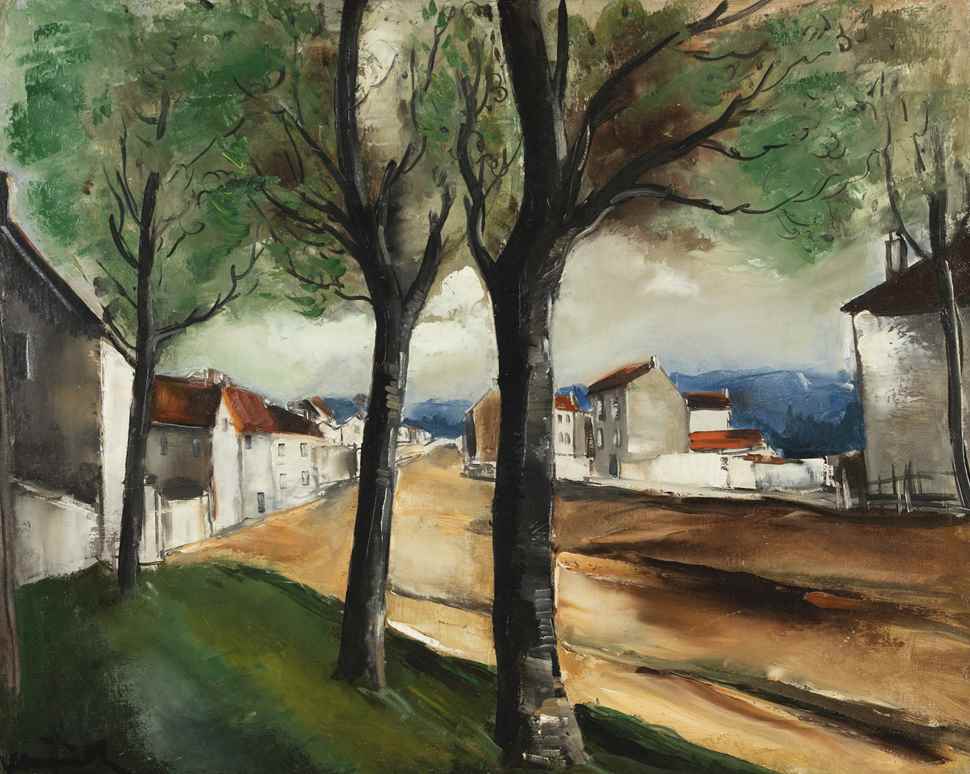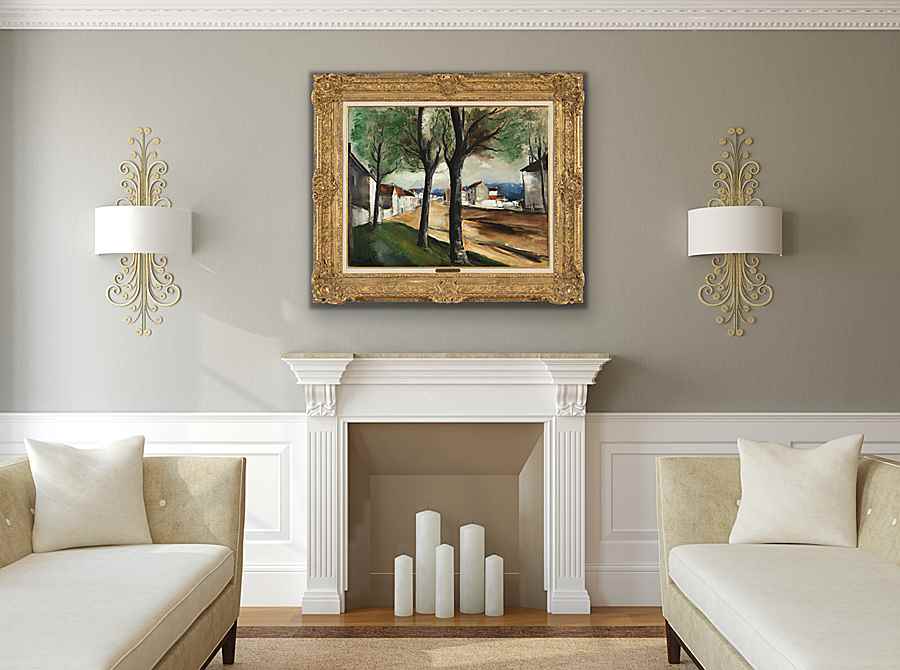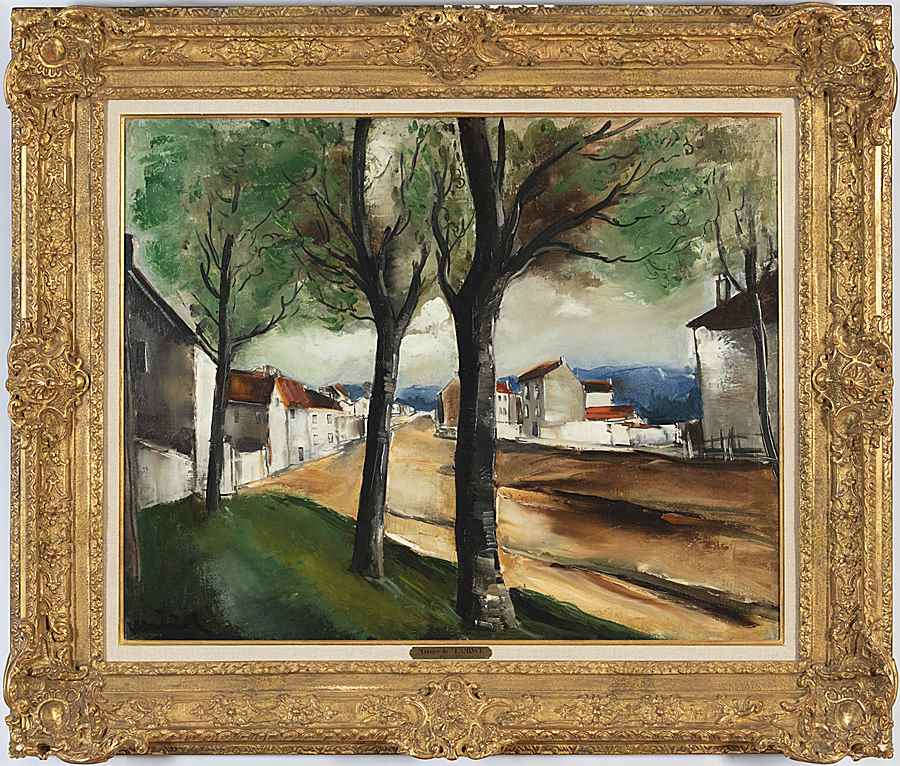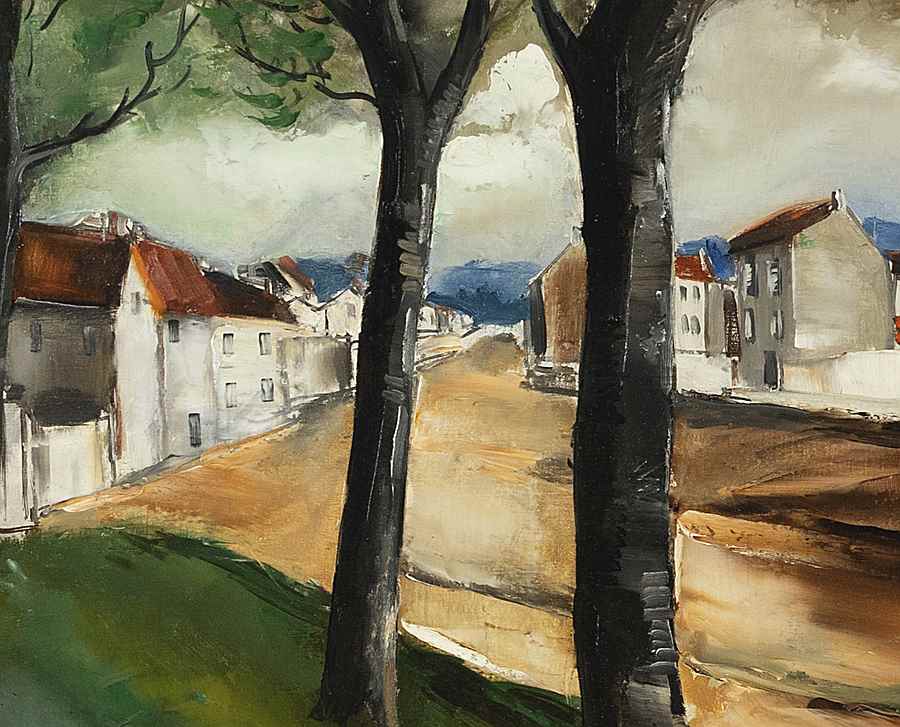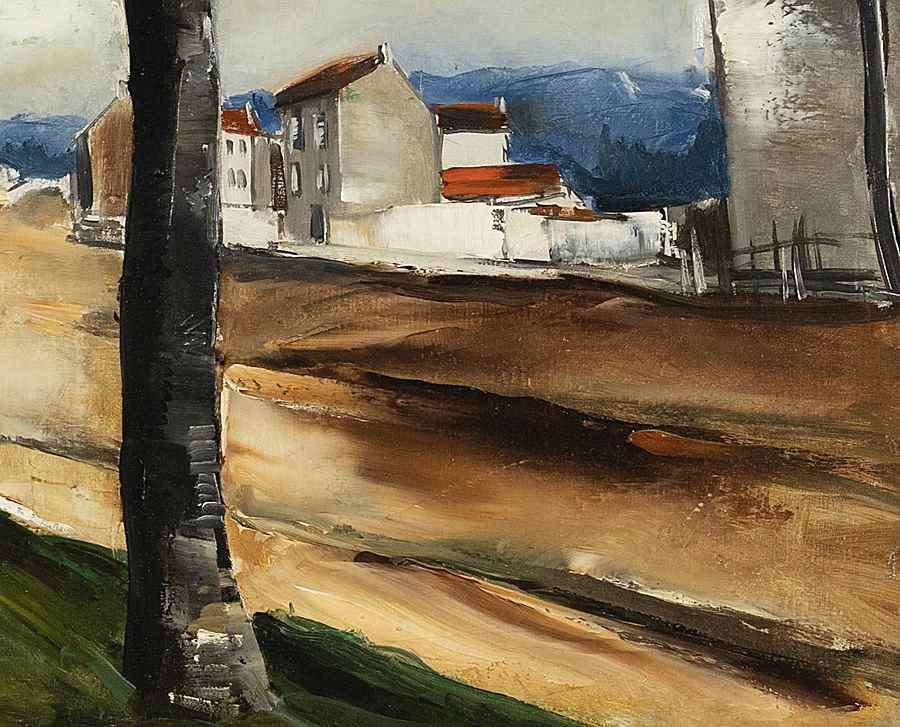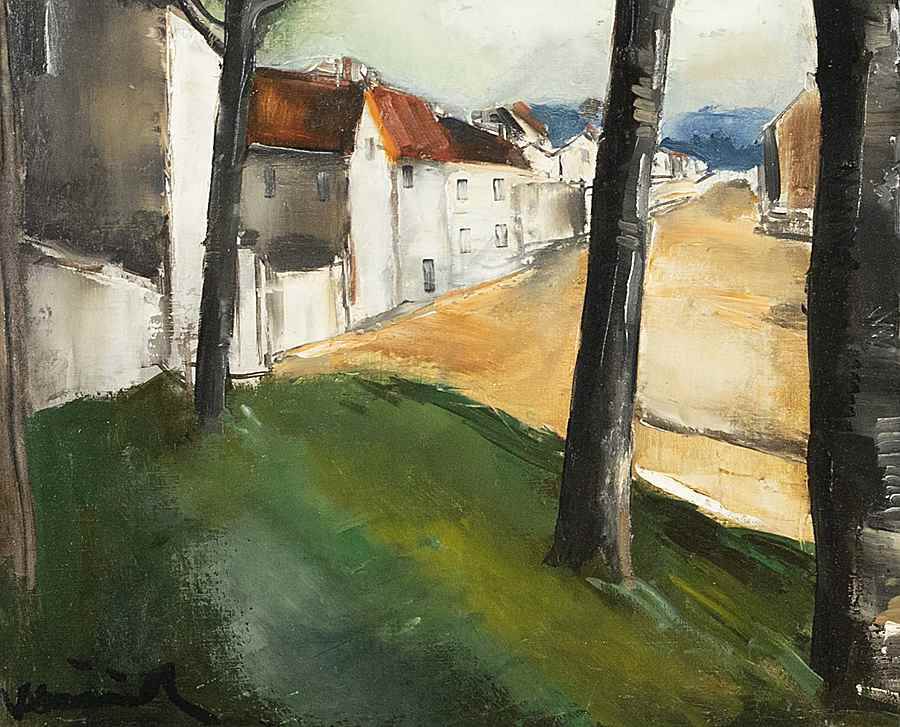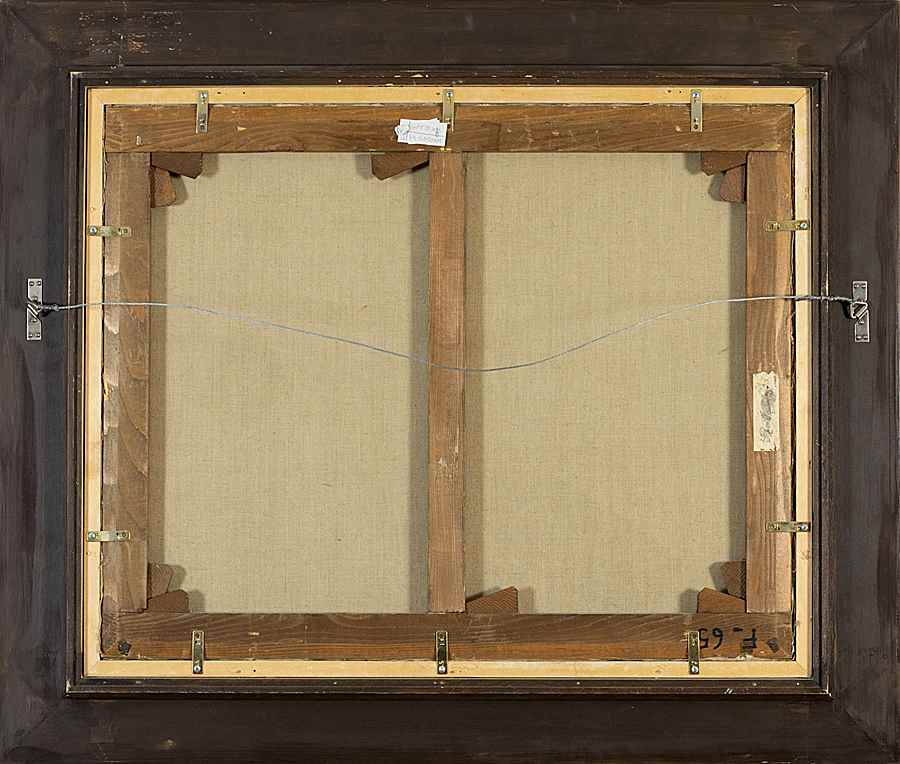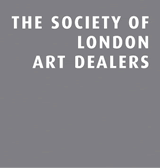Maurice de Vlaminck (1876 - 1958)
La Route
Request Viewing
Oil on canvas
64.8 x 81 cm (25 ¹/₂ x 31 ⁷/₈ inches)
Signed lower left, Vlaminck
-
Provenance
Christie's, New York, 2005
Private collection, USA, acquired from the above
Christie's, New York, 2013
Stern Pissarro Gallery, London, acquired from the above
Private collection, UK, acquired from the above -
-
-
Description
This work is accompanied by a letter from the Wildenstein Institute dated 21st March 2005 stating that it will be included in the forthcoming Catalogue Raisonné de l'oeuvre de Maurice de Vlaminck being prepared the Wildenstein Institute.
This original Maurice de Vlaminck painting is available for immediate purchase.
Artist's Biography
Born in Paris to a French mother, his father was a Flemish violin teacher who encouraged his teenage son to study with the painter Henri Rigalon. A chance meeting on a train with André Derain at the age of twenty-three began a lifelong friendship and turned his attentions to painting as a career. Upon completion of national army service, in 1900 De Vlaminck rented a studio with Derain, writing “several mildly pornographic novels” which were illustrated by his friend. Spending much of the day painting in their studio, De Vlaminck earned his living by teaching and performing the violin in the evenings. Two of his ground breaking paintings Sur le zinc (At the Bar) and L'homme a la pipe (Man Smoking a Pipe) emerged during this pivotal period of experimentation with intense colour. Considered one of the principal figures of the French Fauvist movement (c1904-8) he exhibited at the controversial Salon d’Automne in 1905 at which the critic Louis Vauxcelles famously described the young painter and his friends as ‘fauves’ (wild beasts).
For the next few years Vlaminck lived in or near Chatou outside Paris (the inspiration for his painting Houses at Chatou), painting and exhibiting alongside Derain, Matisse, and other Fauvist painters. Vlaminck's compositions represent a deep familiarity with the work of the Impressionists who had painted in the same area nearly fifty years before. At this time his exuberant paint application and vibrant use of colour displayed the influence of Vincent van Gogh. After visiting a Van Gogh exhibition Vlaminck even declared he "loved Van Gogh that day more than my own father". Vlaminck’s painting Sur le zinc calls to mind the work of Henri Toulouse-Lautrec and his portrayals of prostitutes and solitary drinkers, but does not attempt to probe the sitter's psychology—a break with the century-old European tradition of individualised portraiture of modernist ennui. In Vlaminck’s landscape paintings, his approach was similar: ignoring detail so that the landscape expresses mood through violent colour and vigorous brushwork, as in Sous bois (1904). The following year, he began to experiment with "deconstruction," turning the physical world into dabs and streaks of colour that convey a sense of motion. His paintings Le Pont de Chatou (The Chatou Bridge), Les Ramasseurs de pommes de terre (The Potato Pickers), La Seine a Chatou (The River Seine at Chatou) and Le Verger (The Orchard) exemplify this trend.
From 1908 Vlaminck’s predominant influence appears to be that of Paul Cézanne, his palette becoming darker and almost monochromatic, punctuated by heavy strokes of contrasting white paint. In 1911 he travelled to London to spent time painting beside the River Thames as his Impressionist forebears had done so. A poet and prolific auto-biographer, in later life Vlaminck became resentful that Fauvism had been superseded by Cubism and famously blamed Picasso "for dragging French painting into a wretched dead end and state of confusion".
You may also like
-
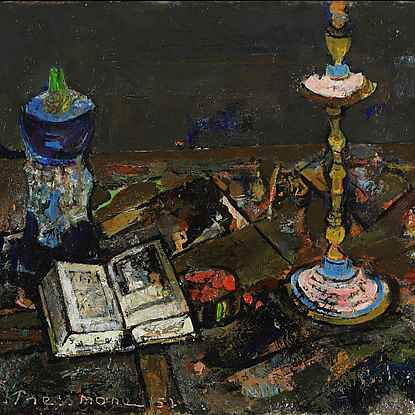 Still Life with Candlestick and Book Joseph Pressmane (1904 - 1967)
Still Life with Candlestick and Book Joseph Pressmane (1904 - 1967) -
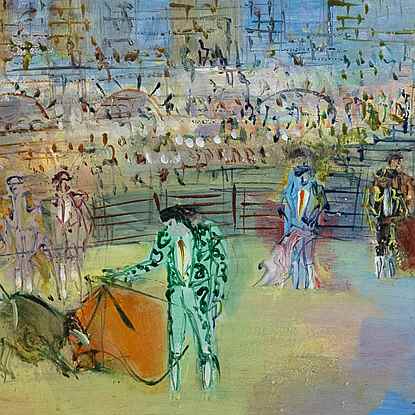 Corrida Espagnole Jean Dufy (1888 - 1964)
Corrida Espagnole Jean Dufy (1888 - 1964) -
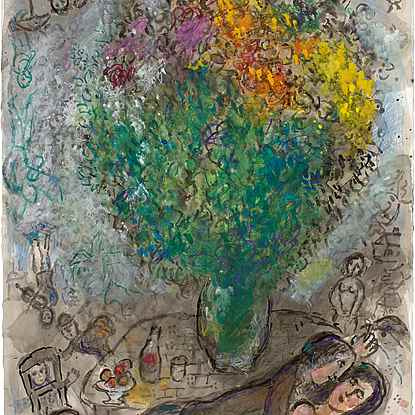 Couple Allongé au Grand Bouquet Marc Chagall (1887 - 1985)
Couple Allongé au Grand Bouquet Marc Chagall (1887 - 1985) -
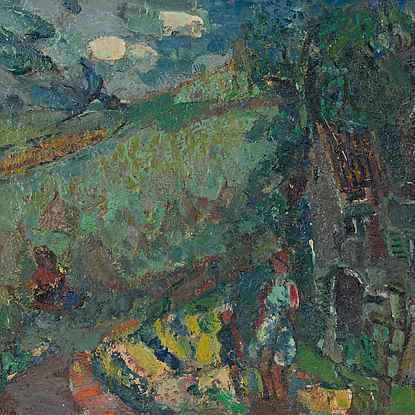 Paysage d'Annay-sur-Serein Michel Kikoïne (1892 - 1968)
Paysage d'Annay-sur-Serein Michel Kikoïne (1892 - 1968) -
 La Seine et la Tour Eiffel, vue d'un balcon Louis Marcoussis (1878/1883 - 1941)
La Seine et la Tour Eiffel, vue d'un balcon Louis Marcoussis (1878/1883 - 1941) -
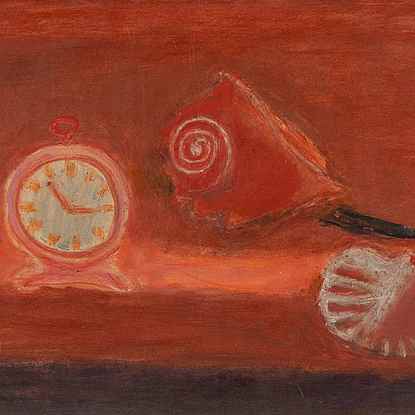 Coquillage et réveil en rouge Henri Hayden (1883 - 1970)
Coquillage et réveil en rouge Henri Hayden (1883 - 1970)

